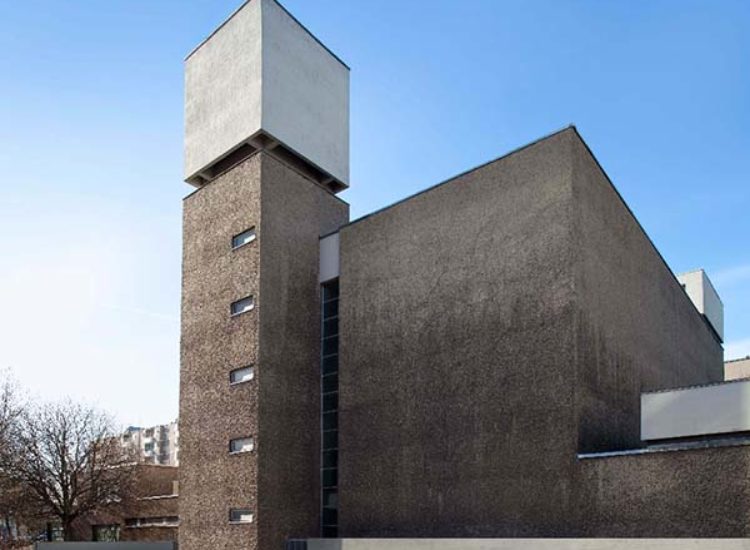Perhaps more than any city around the globe, the German capital has a remarkably wide range of commercial environments in which to see art—some of its best, too. While the white cube has seen relatively solid adoption across the creed, apartment-style spaces—taking advantage of what, in Berlin’s early post-Cold War years, was a wealth of uninhabited and expansive residential space—are equally well favored. More recently, dealers have chosen to reinvent existing iconic structures for gallery use or invite one of the city’s many avant-garde architects to take their shot at gallery construction.
Exemplary of the latter approach is KOW, the single major gallery that remains on the once-bustling art hub of Brunnenstrasse. “We were able to collaborate with [Arno] Brandlhuber at a very early stage and could design many elements of the gallery together with him,” co-owner Alexander Koch told artnet News about the space, which spans three floors of the building. Many of those decisions were spurred by their highly theoretical and socially-sensitive program.
For example, a wall within the street-level portion of the gallery rotates inwards, completely opening the space to passers-by, which allows Koch and his partners “to entirely bring down the borders between the inside and the outside, the private and the public, the art space and the urban space.” When those doors are closed, however, getting into and around the gallery requires a circuitous route through the courtyard, steps up to the second floor, and then a trip within the gallery all the way to the basement. “You need to spend some time in the space and make some effort to see all three levels,” Koch says, which allows visitors time to focus on the art on display.
Contemporary Fine Arts’ (CFA) space, located just off Berlin’s Museum Island is also exemplary of highly-specialized new construction being erected in Berlin for art’s sake. The building was designed and built by David Chipperfield Architects between 2003 and 2007. It has become a hallmark in the starchitect’s oeuvre—along with the restoration of the Neues Museum, which it faces.
The “Berlin” Route
But, in a city known for its understated edge, perhaps the more “Berlin” route to take is that of dealers like Johann König who have grabbed up prime but disused architectural spaces for their galleries. König is currently renovating the former St. Agnes Church into a Kunsthalle-size gallery space—only rivaled in scale by that of Sprüth Magers—after two years of using the structure in its raw form for special exhibitions and projects.
In 2011, Blain | Southern moved into a cavernous hall, which formerly held the printing press of Berlin newspaper, the Tagesspiegel. Gerhardsen Gerner occupies a series of arches underneath the city’s S-Bahn (commuter train) track, built in 1990 with windows on its back side looking out onto the Spree River. The space’s conversion into a gallery even won its architects, Oda Pälmke and Tobias Engelschall, the 2001 Berlin Architectural Prize.
In a close race with König for most ambitious restoration project of recent years is Galerie Kewenig, which moved to Berlin last year after 27 years in Cologne. The gallery purchased the city’s second-oldest townhouse, a baroque gem from 1688 known as the Palais Happe, which sits at the foot of Museum Island. They spent over a year renovating the structure, creating multiple floors of exhibition space as well as libraries and an archive.
Berlin’s penchant for Ostalgie has found its way into its art scene’s built environment as well. The German capital’s newest conversion, Galerie Neu’s new Mitte space on Linienstrasse, occupies an outbuilding of a GDR Plattenbau apartment block, which was previously used as a miniature heating and electric plant. And two equally-impressive galleries—Capitain Petzel and Peres Projects—fill former commercial spaces along the idyllic (at least in Soviet terms) Karl-Marx-Allee.
